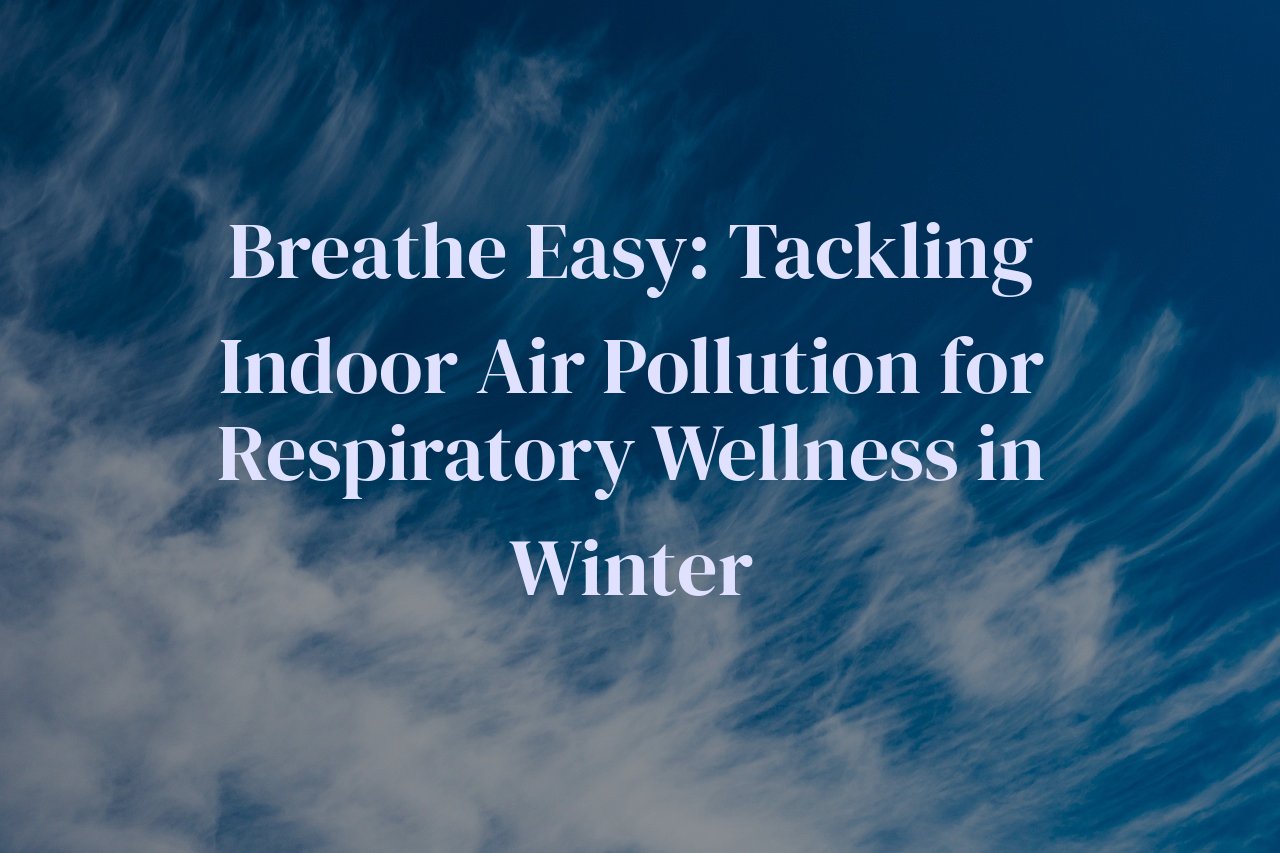
As temperatures dip and we seek the warm haven of our homes, it’s critical to consider the hidden adversary impacting our respiratory wellbeing – the quality of indoor air. This blog post delves into the intricate relationship between indoor air quality and lung health, particularly in brisk, cold climates. Unraveling the science and offering tangible solutions, readers will discover how to safeguard their respiratory health during the frosty months, improving overall indoor living conditions and breathability.
Table of Contents
Understanding Indoor Air Quality and Its Elements
The essence of indoor air quality (IAQ) rests upon multiple elements that coalesce to define the air we breathe within our living spaces. Crucial to respiratory wellness, IAQ is a composite index influenced by an array of pollutants and environmental factors, each playing a pivotal role in shaping our daily health landscape.
Firstly, chemical pollutants are central to understanding IAQ. These emanate from a variety of sources including cleaning products, off-gassing from furnishings and building materials, and even cooking appliances. Volatile organic compounds (VOCs), for instance, are ubiquitous, stealthily impacting air quality as they escape from paints, solvents, and air fresheners.
Particulate matter (PM), another key player, consists of microscopic particles that can invade the deepest reaches of our bronchial pathways. Originating from combustion processes, such as heating and smoking, or outdoor pollutants that seep indoors, PM levels intensify during winter as homes are sealed tightly against the cold, trapping these particles.
Biological pollutants also stake a claim in the IAQ domain. This category includes mold, dust mites, pet dander, and pollen, which can all proliferate in the home environment, exacerbating allergies and asthma. The winter season, with its damp and humid conditions, often ushers in an increase in mold and mites, posing additional risks to respiratory health.
Furthermore, carbon monoxide (CO) and nitrogen dioxide (NO2), byproducts of combustion and inadequate ventilation, are odorless yet insidious gases that can silently accumulate, especially in homes utilizing gas stoves or unvented heaters.
Lastly, indoor air is also subject to the whim of outdoor contaminants infiltrating the sanctity of our homes. This interplay necessitates an awareness of the broader environmental context, as external pollution levels can dramatically affect the sanctity of our indoor spaces. Recognizing and addressing these elements empowers us to foster a haven of clean air, essential for sustaining the respiratory health that enables us to breathe easy, even as winter tightens its grip.
Respiratory Risks in the Chilling Embrace of Winter
As winter wraps its frosty fingers around our homes, the drop in temperatures ushers in a unique set of respiratory risks, particularly when considering indoor air quality. Cold air, with its diminished capacity to hold moisture, leaves indoor environments dry. This lack of humidity can lead to irritated respiratory passages, making them more susceptible to infections and a playground for viruses such as the common cold or flu.
Moreover, the comfort of our heated sanctuaries often comes with a side of stale air. Heating systems can circulate dust, pet dander, and other particulates, contributing to indoor air pollution. Such particles can exacerbate asthma and allergies, increasing coughing, wheezing, and shortness of breath among those with existing respiratory issues.
The ‘warmth’ within our homes may also encourage the growth of mold spores, particularly in areas with poor ventilation. Moist, warm environments are hotspots for mold, which releases spores that can trigger severe respiratory reactions when inhaled.
Winter’s invitation to indoor coziness often implies that windows remain shut, reducing the exchange of indoor and outdoor air. The resulting lack of ventilation can lead to a build-up of contaminants including carbon monoxide and radon, both of which pose significant risks to lung health even at low levels over long periods. Carbon monoxide’s stealthy, odourless presence can impair oxygen delivery in the body, while radon’s radioactive characteristics have been linked to lung cancer.
Lastly, the use of candles, wood stoves, and fireplaces for ambiance and warmth introduces charming flickers of light but also produces particulate matter. These seemingly innocent crackling flames can contribute to indoor air pollution, adding to the respiratory distress of individuals sensitive to air quality. It’s essential to recognize these seasonal shifts in respiratory risks, adopting informed approaches to manage and mitigate their impacts on our health.
Ventilation Versus Insulation: Striking a Healthy Balance
As we nestle into the heart of winter, many of us turn our attention to keeping our homes warm. Yet, in this pursuit, a critical aspect is often overlooked: the balance between ventilation and insulation. Insulation keeps us cozy, trapping heat within our homes; however, it can also seal in pollutants. Conversely, ample ventilation flushes out stale air but can introduce a chill, sending our thermostats—and heating bills—skyrocketing.
So how do we navigate this conundrum? First, let’s consider the role of insulation. Effective insulation reduces the amount of heat that escapes our homes, which is especially vital during colder months. Insulation materials like fiberglass, foam, or cellulose create a barrier, keeping warm air in. Nevertheless, if not paired with proper ventilation, these materials can trap humidity, volatile organic compounds (VOCs), and other pollutants, undermining our respiratory well-being.
On the flip side, ventilation is the unsung hero of respiratory health, offering fresh air and reducing the concentration of indoor pollutants. While methods like simply opening a window can suffice, in winter, this leads to significant heat loss. Therefore, sophisticated solutions such as heat recovery ventilators (HRVs) or energy recovery ventilators (ERVs) are game-changers. These systems expel stale air while recapturing the heat before it leaves your home, ensuring that freshness doesn’t come at the expense of warmth.
Installing high-efficiency particulate air (HEPA) filters can also complement this balance by providing a layer of defense against airborne particles, while maintaining proper humidification helps protect delicate respiratory tissues from the arid bite of heated air. It’s a ballet of elements where each step must be meticulously choreographed to preserve both warmth and wellness.
To truly achieve this equilibrium, we must not only install the right equipment but also be vigilant in its maintenance. Regular cleaning of filters, checking for leaks in insulation, and monitoring humidity levels are all part of a holistic approach to ensuring our homes remain sanctuaries for health. This delicate dance between ventilation and insulation doesn’t just impact our comfort; it’s integral to our respiratory health, especially in the depth of winter’s frosty embrace.
Practical Interventions for Healthier Indoor Air
As winter tightens its grip, the doors and windows that usher in a breath of fresh air during warmer months remain steadfastly closed. This seasonal shift significantly impacts indoor air quality, which, in turn, can affect our respiratory health. Bringing clarity to the obscured atmosphere within our homes isn’t just comfort; it’s a health imperative. Let’s embark on a purifying odyssey that delivers palpable benefits with pragmatic interventions.
Commence with the humble act of houseplants adoption. Not merely ornamental, these green companions engage in an unspoken exchange, absorbing carbon dioxide and other pollutants, returning with the gift of oxygen. Select varieties like the spider plant or peace lily, known for their air-purifying prowess, and place them in living spaces where you spend most of your time.
Next, integrate air purifiers into the domestic landscape. These devices, when equipped with HEPA filters, can captivate fine particles, including dust, pollen, and other allergens that otherwise somersault through the air. It’s an investment in an unseen shield that cocoons you from the particulate matter seeking refuge in your respiratory passages.
The simple act of regular cleaning can’t be overstated. Dust and mold are notorious for accumulating under the veil of neglect, especially in hidden corners. Embrace a cleaning ritual that encompasses vacuuming with HEPA-filtered machines, damp dusting to anchor airborne particles, and the maintenance of upholstery and carpets – known havens for dust mites.
Akin to a watchful guardian, the carbon monoxide detector is an essential sentinel against the invisible threat of this odorless assassin. Ensure your home is equipped with these detectors, particularly around combustion appliances. They are not only guardians of your night but of your life’s breath – a small beacon that alerts you to unseen dangers.
The kitchen, while a heartwarming hearth of the home, can unwittingly become a fount of fumes. Embrace cooking with exhaust fans or at the very least, a cracked window to ensure the dispersion of combustion byproducts. Boiling water, sizzling pans, or a charred piece of toast can send fine particulates pirouetting into your living space, making this practice an easy yet crucial maneuver in the quest for clean air.
The tapestry of interventions weaves a clearer picture of the air in our sanctuary. With each pragmatic step, an investment in our respiratory health ensures that each winter breath we take is as pure as a wintry breeze, unfettered by the confines of indoors.
Monitoring and Enhancing Your Home’s Air Purity
Unseen to the eye but palpable to the lungs, indoor air quality forms a cornerstone of our respiratory health, more critically in winter when we’re ensconced within our heated sanctuaries. To safeguard and enhance this invisible ally, it’s pivotal to embark on a two-pronged mission: constant monitoring and proactive enhancement. Monitoring begins with installing an indoor air quality (IAQ) monitor, a sentinel that whispers the state of your indoor atmosphere through real-time data on particulates, volatile organic compounds, carbon dioxide levels, and even humidity and temperature.
Dawning awareness, however, is but half the battle; enhancement is the other. Air purifiers serve as knights in this silent fray, banishing contaminants with filters tailored for specific pollutants — HEPA for allergens, carbon for odors, or UV for pathogens. Every filter has a metaphorical sword, tackling a different adversary within the air. For those seeking sanctuary from the havoc wrought by humidity, a dehumidifier’s embrace can alleviate the pressure on your lungs, curtailing mold’s unwelcome overtures.
Emerging not as a hero but as a humble gardener, the inclusion of houseplants in your abode brings a natural touch to air purification. Plants like the spider plant or peace lily aren’t just decor but dutiful purifiers that engage in a silent exchange, drawing in carbon dioxide and bestowing oxygen, an ancient ritual of refreshment for your home’s air.
Fresh air intake systems can be likened to a home’s respiratory system, introducing a seamless flow of outdoor air, suitably filtered to ensure it carries none of winter’s biting cold or pollutant accompaniments. This works hand-in-glove with an energy recovery ventilator, which captures the warmth of outgoing stale air, thus maintaining a hospitable warmth without inviting the cold’s sharp bite.
Lastly, the intimate act of cleaning — the rhythmic sweep of a broom, the purring hum of a vacuum with a HEPA filter — removes particulates that have settled on surfaces, waiting to be stirred into the air. It’s not just cleaning; it’s an act of care, a tactile poem dedicated to the air we breathe — ensuring that each breath we draw within our winter enclave is less a gasp in the chill of winter and more a sigh of relief in the warmth of our haven.
Conclusion
To conclude, tackling indoor air quality is not just seasonal maintenance but a year-round commitment to our health. By integrating the insights and strategies discussed, individuals can create a sanctuary that not only shelters from the cold but also promotes robust respiratory health. As we continue to navigate the coldest months, let’s renew our focus on breathing life into our indoor environments – because every breath we take should help, not hinder, our well-being.



